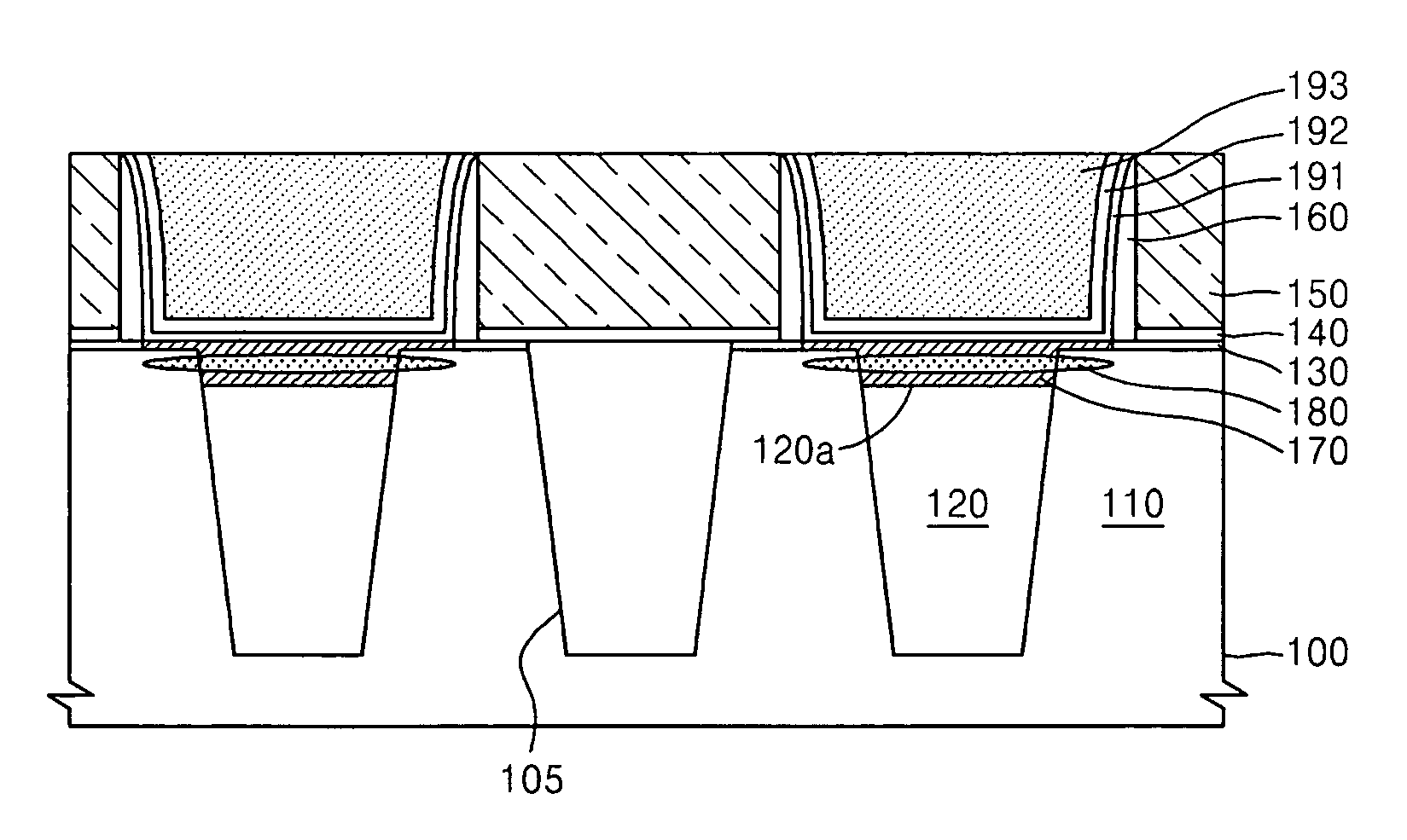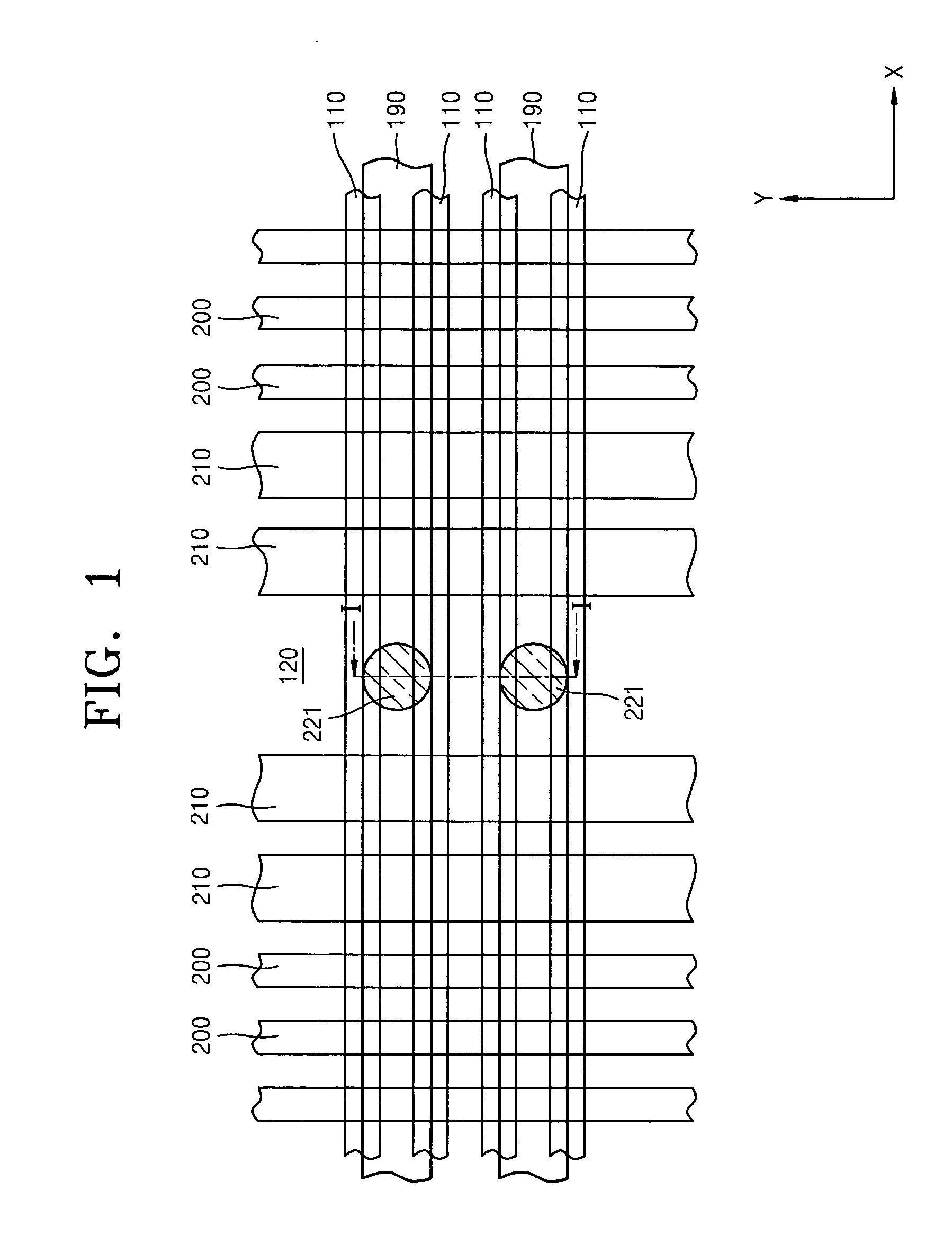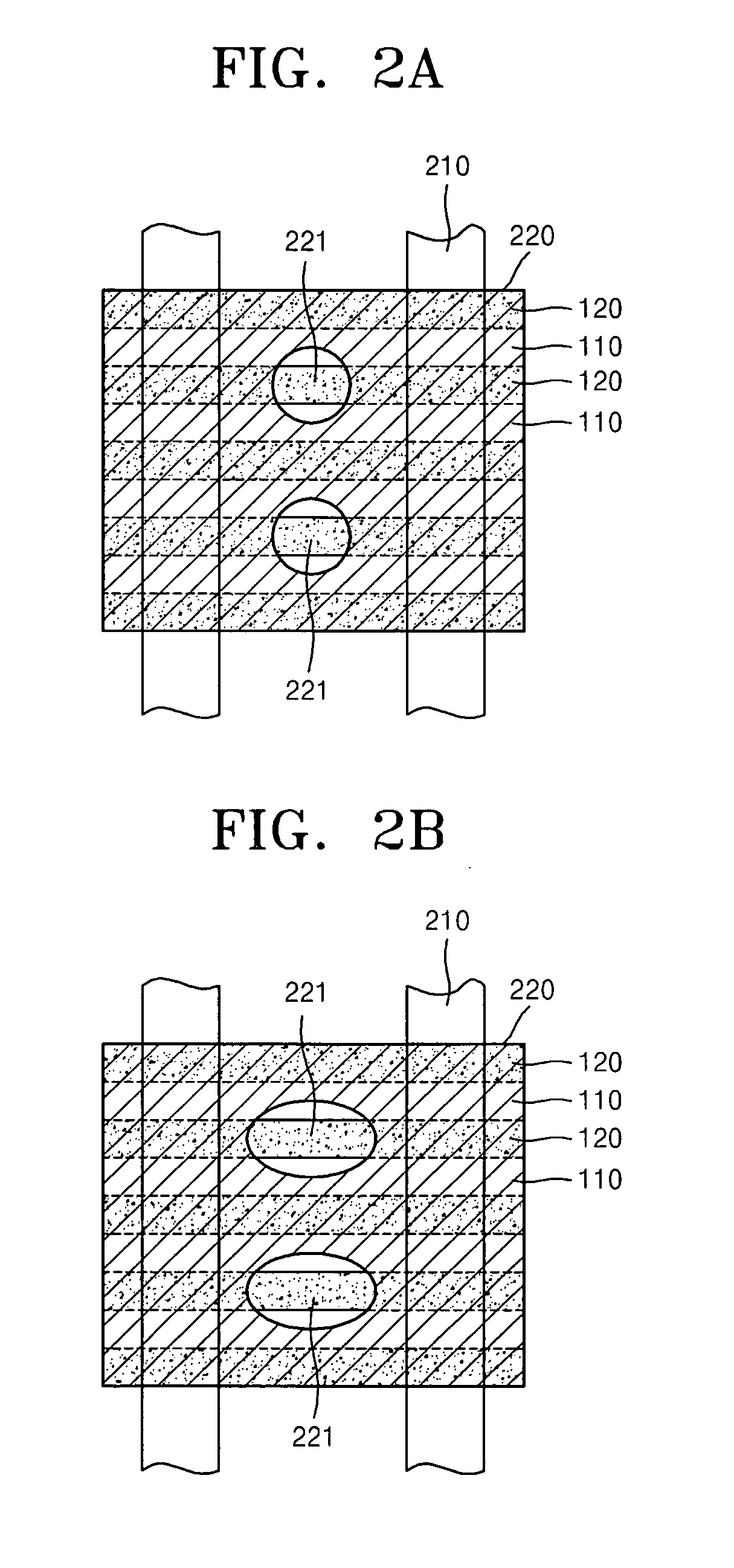Semiconductor device having shared bit line structure and method of manufacturing the same
a technology of semiconductor devices and bit lines, which is applied in the direction of semiconductor devices, semiconductor/solid-state device details, electrical apparatus, etc., can solve the problems of unwanted interactions between adjacent features and closely spaced bit lines, and achieve the effect of reducing photolithographic operations
- Summary
- Abstract
- Description
- Claims
- Application Information
AI Technical Summary
Benefits of technology
Problems solved by technology
Method used
Image
Examples
first embodiment
[0058]FIG. 3 illustrates a cross-sectional view of the device of FIG. 1, taken along the line I-I in FIG. 1. Referring to FIG. 3, substrate 100 may include the active regions 110. The active regions 110 may be separated by the field regions 120.
[0059]The field regions 120 may be covered by a first interlayer dielectric (ILD) layer 150. Between the first ILD layer 150 and the underlying substrate 100, a tunneling isolation (tunnel oxide) layer 130 and then a stop layer 140, e.g., a silicon nitride (SiN) stop layer, may be sequentially stacked on the substrate 100.
[0060]An upper surface 120a of the field region 120 may be recessed with respect to an uppermost surface of the substrate 110. The recessed upper surface 120a may thus expose sidewalls of the adjacent active regions 110, thereby providing an increased contact area therewith. A shared bit line contact plug 193 formed of a conductive material, e.g., tungsten, may be on the upper surface 120a of the field region 120 and on the ...
second embodiment
[0067]FIG. 4 illustrates a cross-sectional view of the device of FIG. 1 in which an active bridged region 170 is employed. Referring to FIG. 4, the upper surface 120a of the field region 120 may be recessed with respect to the uppermost surface of the substrate 100, thus exposing sidewalls of the adjacent active regions 110 to provide an increased contact area therewith. The active bridged region 170 may be disposed in the recess, such that the active bridged region 170 extends across the field region 120 and is in contact with the exposed sidewalls of the adjacent active regions 110. Thus, the active bridged region 170 may serve to electrically connect the two adjacent active regions 110.
[0068]The shared bit line contact plug 193 may be disposed on the active bridged region 170. The shared bit line contact plug 193 may be formed of a conductive material such as tungsten, polysilicon, etc.
[0069]In an implementation, the active bridged region 170 may be a polycrystalline silicon laye...
third embodiment
[0070]FIG. 5 illustrates a cross-sectional view of the device of FIG. 1 in which a separated SEG active bridged pattern 170′ is employed. The active bridged region 170′ may include opposing portions 171 and 172, which may be separated by a gap therebetween. The portions 171 and 172 may be formed by SEG. In the SEG process, crystal growth from the laterally opposed sidewalls of the adjacent active regions 110 toward the center of the field region 120 may be stopped before the portions 171 and 172 join.
[0071]In an implementation, the portions 171 and 172 of the active bridged pattern 170′ may be doped using ion implantation to form respective impurity regions 181 and 182.
PUM
 Login to View More
Login to View More Abstract
Description
Claims
Application Information
 Login to View More
Login to View More - R&D
- Intellectual Property
- Life Sciences
- Materials
- Tech Scout
- Unparalleled Data Quality
- Higher Quality Content
- 60% Fewer Hallucinations
Browse by: Latest US Patents, China's latest patents, Technical Efficacy Thesaurus, Application Domain, Technology Topic, Popular Technical Reports.
© 2025 PatSnap. All rights reserved.Legal|Privacy policy|Modern Slavery Act Transparency Statement|Sitemap|About US| Contact US: help@patsnap.com



